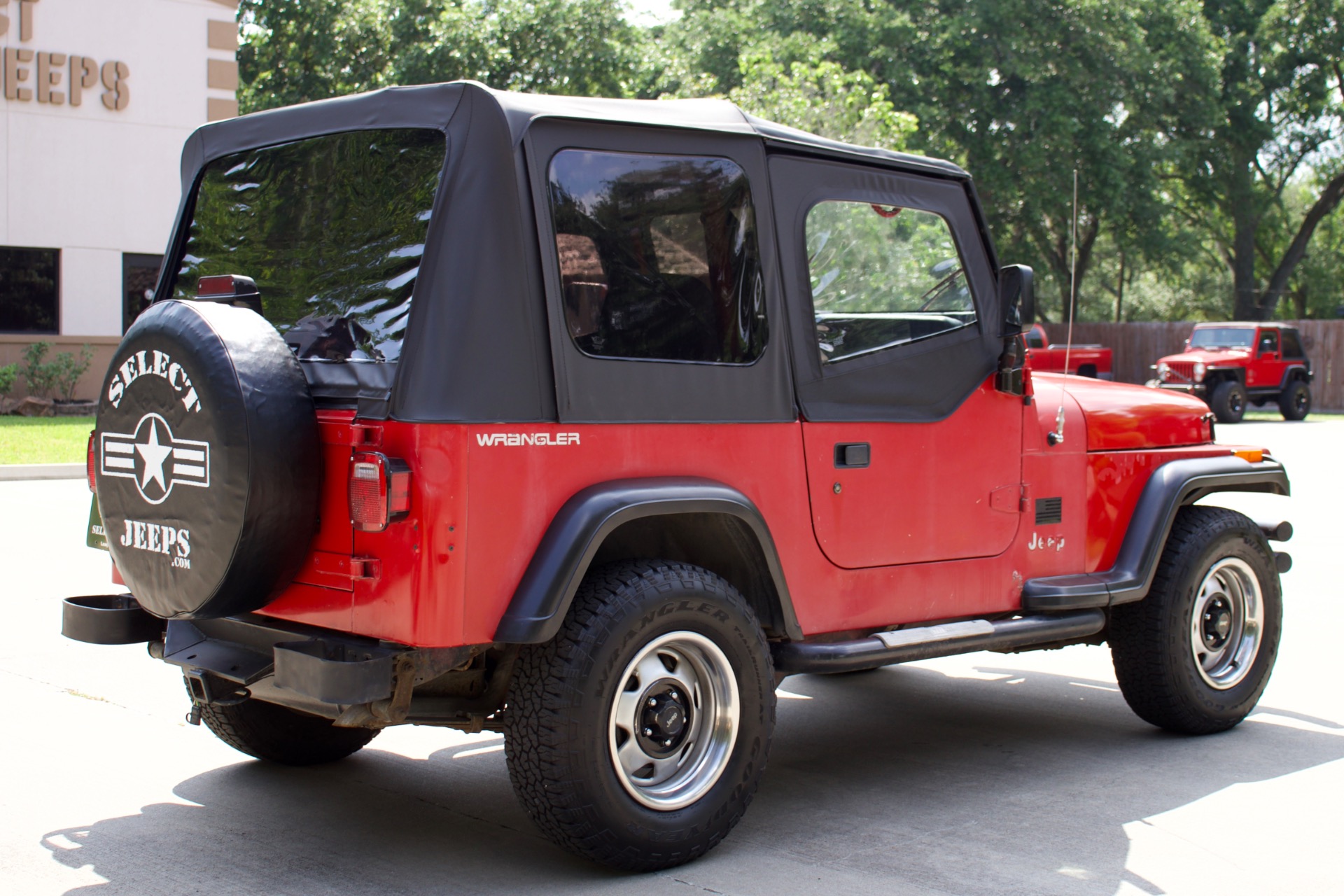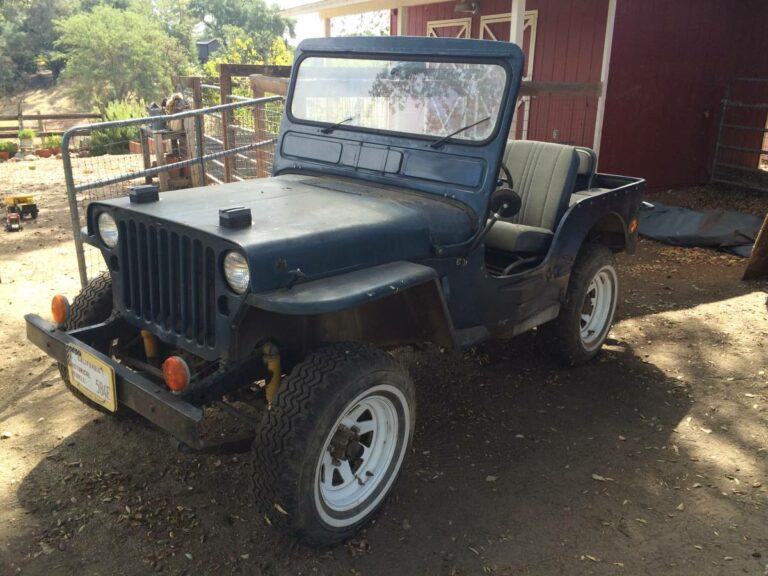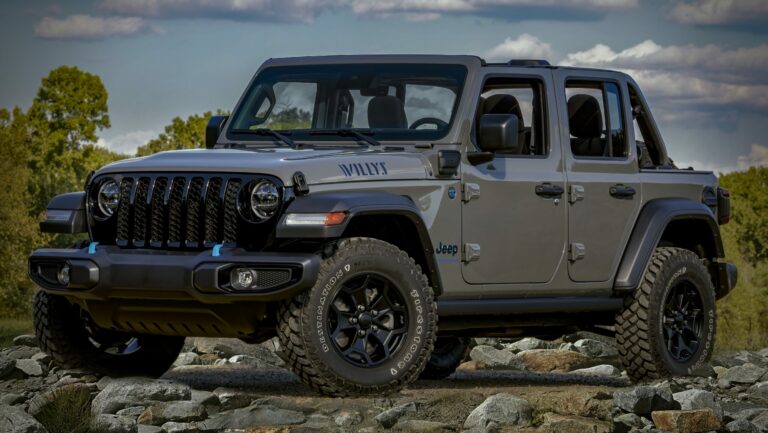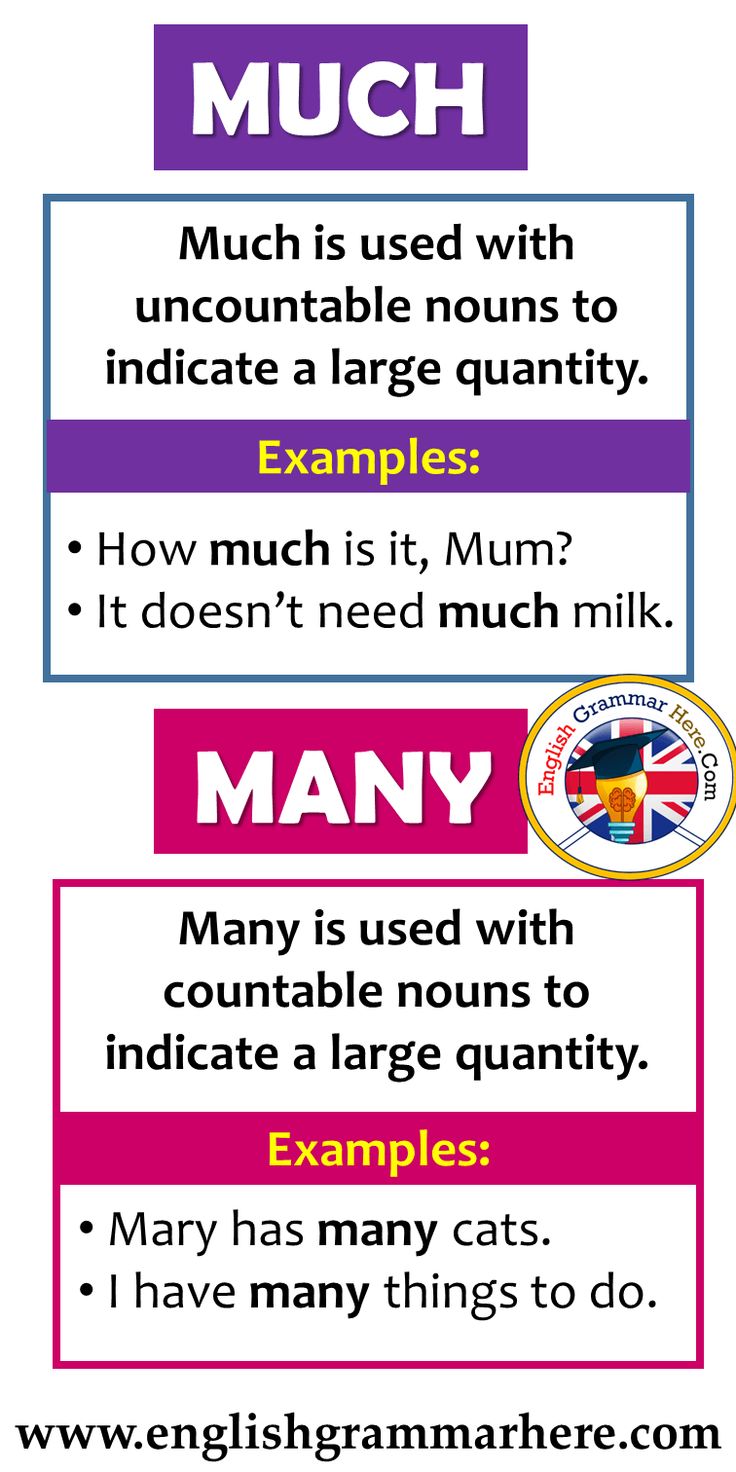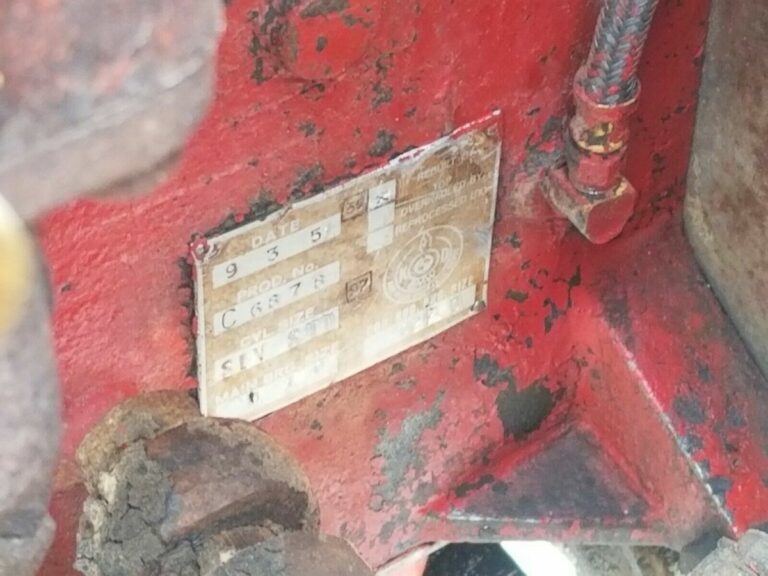Used 1995 Jeep Wrangler For Sale: Your Comprehensive Guide to Owning an Icon
Used 1995 Jeep Wrangler For Sale: Your Comprehensive Guide to Owning an Icon jeeps.truckstrend.com
The allure of a Jeep Wrangler is undeniable, a symbol of freedom, adventure, and rugged capability. While newer models boast modern comforts and advanced technology, there’s a special charm to the vintage Jeeps that connect drivers to the brand’s storied past. Among these, the Used 1995 Jeep Wrangler For Sale stands out as a particularly sought-after model. Representing the final year of the YJ generation, famous for its distinctive square headlights, the 1995 Wrangler offers a unique blend of classic appeal, straightforward mechanics, and legendary off-road prowess.
This comprehensive guide is designed for anyone considering purchasing a used 1995 Jeep Wrangler. We’ll delve into what makes this specific year so special, what to look for during your search, common modifications, potential challenges, and practical advice to ensure you make an informed decision and embark on your Jeep adventure with confidence.
Used 1995 Jeep Wrangler For Sale: Your Comprehensive Guide to Owning an Icon
Why Choose a Used 1995 Jeep Wrangler?
Opting for a 1995 Jeep Wrangler isn’t just about acquiring a vehicle; it’s about embracing a lifestyle and owning a piece of automotive history. Here’s why this particular model continues to captivate enthusiasts:
-
Classic Appeal & Nostalgia: The 1995 Wrangler is the last iteration of the YJ generation (1987-1995), famously characterized by its rectangular headlights—a departure from the round headlights of its CJ predecessors and TJ successors. This unique design element makes the YJ instantly recognizable and gives it a distinct classic vibe that newer models simply can’t replicate. For many, it evokes a sense of nostalgia for a simpler, more analog driving experience.

Unmatched Off-Road Prowess: At its core, a Jeep is built for off-road adventure, and the 1995 YJ is no exception. Equipped with solid axles (Dana 30 front, Dana 35 rear standard) and leaf spring suspension both front and rear, it offers exceptional articulation and durability on challenging terrain. Its relatively short wheelbase and robust 4×4 system (Command-Trac NV231 transfer case) make it incredibly agile and capable on trails, rocks, and mud.
-
Simplicity & Maintainability: Compared to modern vehicles brimming with complex electronics, the 1995 YJ is refreshingly simple. Its mechanical nature makes it easier for the average DIY enthusiast to work on, reducing labor costs for repairs and modifications. Parts are widely available and often more affordable, thanks to decades of aftermarket support and a large community of owners.
-
Affordability & Value Retention: While prices vary based on condition, a used 1995 Wrangler generally offers a much lower entry point into the Jeep world than a brand-new model. Furthermore, well-maintained YJs tend to hold their value remarkably well, and pristine examples can even appreciate over time, making them a potentially sound investment for enthusiasts.
-
Customization Potential: The aftermarket industry for Jeep Wranglers is immense, and the YJ benefits from this extensively. From lift kits and larger tires to heavy-duty bumpers, winches, and engine performance upgrades, the possibilities for customization are virtually endless. This allows owners to tailor their YJ precisely to their off-roading needs or aesthetic preferences, making each one truly unique.
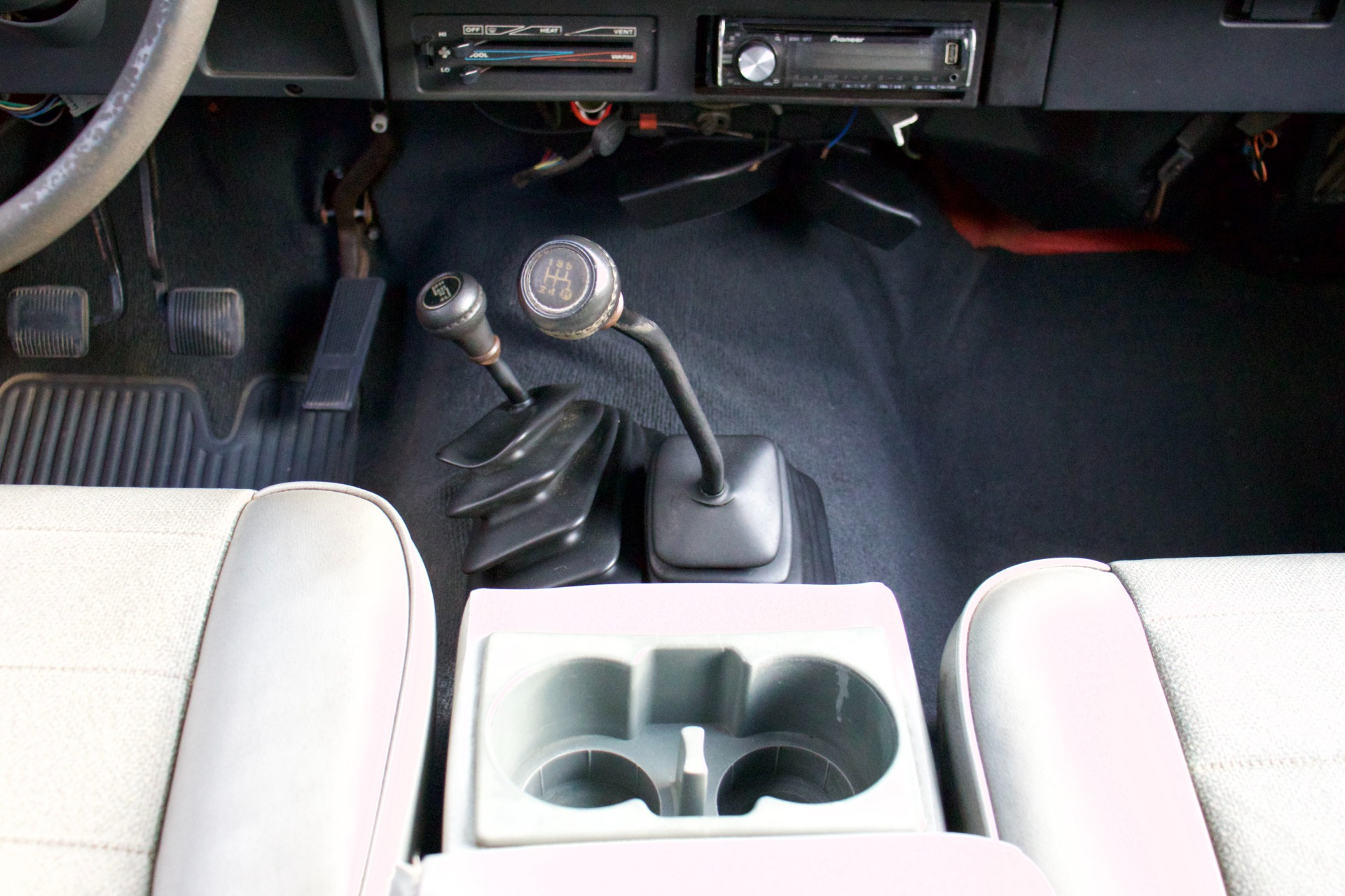

Key Features and Specifications of the 1995 Jeep Wrangler (YJ)
Understanding the core specifications of the 1995 YJ will help you evaluate potential purchases and appreciate its capabilities:
-
Engine Options:
- 2.5L AMC 150 I4 (Inline-4): This 4-cylinder engine produced around 123 horsepower and 139 lb-ft of torque. While adequate for light duty and trail crawling, it can feel underpowered on highways, especially with larger tires or heavy modifications.
- 4.0L AMC 242 I6 (Inline-6): The undisputed king of YJ engines, this venerable 6-cylinder powerplant offered 180 horsepower and 220 lb-ft of torque. Known for its legendary reliability, strong low-end torque, and smooth operation, the 4.0L is highly sought after for its versatility, whether on the highway or the trail. Most enthusiasts highly recommend seeking out a 4.0L model.
-
Transmissions:
- 5-Speed Manual: The standard transmission, offering a more engaging driving experience and better control, especially off-road.
- 3-Speed Automatic: An optional choice, primarily for the 4.0L engine. While less fuel-efficient and with fewer gears than modern automatics, it’s durable and straightforward.
-
Transfer Case:
- Command-Trac NV231: A part-time 4×4 system, meaning it should only be engaged on loose surfaces (dirt, gravel, snow, mud) and not on dry pavement. It offers 2WD High, 4WD High, and 4WD Low ranges.
-
Axles:
- Front: Dana 30: A common and reasonably strong front axle for light to moderate off-roading.
- Rear: Dana 35: Standard for most YJs. While sufficient for stock or lightly modified Jeeps, it’s considered a weaker link for aggressive off-roading or larger tires and is often a candidate for aftermarket upgrades (e.g., to a Ford 8.8 or Dana 44).
-
Suspension:
- Leaf Springs: Both front and rear. This is a key differentiator from the later TJ (coil springs). Leaf springs are robust and offer good load-carrying capacity but can provide a stiffer ride compared to coil springs.
-
Body & Interior:
- Removable Doors & Fold-Down Windshield: Signature Jeep features that enhance the open-air driving experience.
- Interior: Basic, durable, and designed to be hose-out friendly. Don’t expect luxury; expect functionality.
What to Look For When Buying a Used 1995 Jeep Wrangler (Pre-Purchase Inspection Guide)
Buying an older vehicle like a 1995 YJ requires a thorough inspection. Rust is the primary enemy of these Jeeps. Be diligent and consider a professional pre-purchase inspection.
-
Rust, Rust, Rust (The Number One Concern):
- Frame: Inspect the entire frame, especially near the skid plate mounts, spring perches, body mounts, and the rear cross member. Look for flaking, holes, or significant pitting. Rust here is a deal-breaker unless you’re planning a full frame-off restoration.
- Body: Check the floorboards (especially under the carpets), rocker panels, wheel wells, door hinges, and the area around the windshield frame. Surface rust is manageable; widespread, deep rust or holes are costly.
- Brakes/Fuel Lines: Inspect for corrosion.
-
Engine:
- Leaks: Look for oil, coolant, or power steering fluid leaks.
- Sounds: Listen for unusual noises (knocks, ticks, squeals). The 4.0L is known for a slight exhaust manifold tick, which isn’t usually critical.
- Smoke: Blue smoke (oil burning), white smoke (coolant), or black smoke (rich fuel mixture) from the exhaust.
- Fluid Levels: Check oil and coolant for proper levels and condition.
-
Transmission & Drivetrain:
- Manual: Check clutch engagement (shouldn’t slip), smooth shifting, and absence of grinding noises.
- Automatic: Check fluid color (should be red, not dark or burnt), shifting smoothness, and engagement.
- Transfer Case: Engage 4WD (High and Low) and listen for clunks or grinding. Ensure it shifts smoothly into and out of 4WD.
- U-Joints: Inspect driveshaft U-joints for play or signs of wear.
-
Suspension & Steering:
- Leaf Springs: Check for sagging, broken leaves, or excessive rust on mounting points.
- Shocks: Look for leaks or excessive bouncing.
- Steering: Check for excessive play in the steering wheel. Look for worn tie rod ends, ball joints, track bar bushings, or a loose steering box. These can contribute to the dreaded "death wobble."
-
Brakes:
- Pedal Feel: Should be firm, not spongy.
- Rotor/Drum/Pad Condition: Check for wear.
- Brake Lines: Inspect for rust or leaks.
-
Electrical & Accessories:
- Test all lights (headlights, tail lights, turn signals), gauges, wipers, heater/AC, and radio.
- Check for any warning lights on the dash.
-
Interior & Top:
- Seats: Check for tears, rips, or collapsing foam.
- Carpets: Lift them to check for rust underneath.
- Soft Top/Hard Top: Inspect for rips, tears, brittle windows, or signs of leaks. Ensure all zippers and latches work.
-
Documentation: Ask for service records, past repair invoices, and a clear title. A CarFax or AutoCheck report can reveal accident history, mileage discrepancies, and title issues.
Common Modifications and Upgrades for the 1995 YJ
One of the greatest joys of YJ ownership is the ability to customize it. Here are popular modifications:
- Lift Kits: Ranging from 1-inch shackle lifts to 6-inch suspension lifts, these allow for larger tires and increased ground clearance.
- Tires & Wheels: Upgrading to larger, more aggressive off-road tires (e.g., 31-inch, 33-inch, or even 35-inch with appropriate modifications) significantly enhances capability and appearance.
- Bumpers & Armor: Aftermarket steel bumpers (front and rear) offer better approach/departure angles and protection, often incorporating winch mounts. Rock sliders and skid plates protect the undercarriage.
- Winch: An essential recovery tool for off-roaders, mounted on the front bumper.
- Axle Swaps: For serious off-roading, many owners upgrade the stock Dana 35 rear axle to a stronger Dana 44, Ford 8.8, or even a Dana 60.
- Gearing: Re-gearing the axles to match larger tires improves performance and fuel economy (often necessary with tire size increases).
- Engine Performance: Aftermarket headers, exhaust systems, cold air intakes, and throttle body spacers can offer modest power gains.
- Interior Upgrades: Aftermarket seats (more comfortable and supportive), roll cage padding, upgraded sound systems, and floor liners.
- Lighting: LED light bars and auxiliary lights for improved visibility off-road.
Owning a 1995 Jeep Wrangler: Challenges and Solutions
While rewarding, YJ ownership comes with its quirks. Being prepared helps you tackle them.
- Rust:
- Challenge: Persistent enemy, especially in northern climates.
- Solution: Thorough pre-purchase inspection is key. For minor rust, address it immediately with rust converters and paint. For frame rust, consider professional welding, frame repair kits, or replacement sections. Regular cleaning and undercoating help prevent recurrence.
- Leaf Spring Ride:
- Challenge: The leaf spring suspension can lead to a stiffer, bouncier ride compared to coil-sprung Jeeps, especially on pavement.
- Solution: Quality aftermarket shocks can significantly improve ride comfort. Some owners install shackle relocation brackets or "revolver" shackles for better articulation and a slightly smoother ride.
- Leaks (Soft Top/Doors/Fluids):
- Challenge: Older soft tops and door seals can leak, and various fluid leaks are common with aging vehicles.
- Solution: Inspect and replace worn soft top fabric or window panels. Replace hardened door seals. Address fluid leaks promptly by identifying the source (valve cover gasket, oil pan gasket, transfer case seals, etc.) and replacing the worn component.
- "Death Wobble":
- Challenge: A violent, uncontrollable shaking of the front end, usually occurring at highway speeds after hitting a bump. It’s terrifying.
- Solution: Not a single cause but a symptom of worn steering and suspension components. Common culprits include worn track bar bushings, loose tie rod ends, worn ball joints, bad steering damper, or even a loose steering box. A thorough inspection of all front-end components and replacement of worn parts will resolve it. Proper alignment is also crucial.
- Fuel Economy:
- Challenge: Don’t expect great MPG, especially with the 4.0L engine and larger tires.
- Solution: Manage expectations. Keep up with engine maintenance (tune-ups, clean air filter), ensure proper tire pressure, and avoid excessive idling. Re-gearing for larger tires can sometimes improve effective fuel economy by bringing the engine back into its power band.
- Security:
- Challenge: Soft tops and removable doors make YJs relatively easy to break into.
- Solution: Never leave valuables inside. Consider an aftermarket alarm system, a Tuffy security console/glove box, or simply removing the soft top windows when parked to show there’s nothing to steal.
Practical Advice and Actionable Insights
- Set a Realistic Budget: Beyond the purchase price, factor in potential repair costs, registration, insurance, and any immediate modifications you plan. Older vehicles often require unforeseen maintenance.
- Research Specific Trims: While 1995 YJs are similar, look for "Sahara" models for potentially more features, although specific features vary by year. The 4.0L engine is highly recommended.
- Don’t Rush the Purchase: There are many YJs out there. Be patient and wait for the right one.
- Join the Community: Online forums (like JeepForum.com, WranglerForum.com), local Jeep clubs, and Facebook groups are invaluable resources for advice, troubleshooting, and finding parts.
- Insurance: Get quotes before buying. Insurance costs can vary for older, modified vehicles.
Used 1995 Jeep Wrangler For Sale: Estimated Price Guide
Prices for a used 1995 Jeep Wrangler vary significantly based on condition, mileage, modifications, engine type, and geographical location. This table provides a general estimate:
| Condition Category | Description | Estimated Price Range (USD) | Key Factors Influencing Price |
|---|---|---|---|
| Project/Parts | Significant rust, non-running, major mechanical issues, incomplete. Requires extensive work. | $1,500 – $4,000 | Extent of damage, completeness, availability of major components (engine/transmission). |
| Fair | Running but needs considerable work (rust repair, mechanical overhaul, cosmetic issues). | $4,000 – $8,000 | Rust severity, engine/transmission health, condition of frame, need for major repairs, high mileage. |
| Good | Mechanically sound, minor rust (surface or easily manageable), decent interior/exterior. Might need minor repairs or updates. | $8,000 – $15,000 | Low-to-moderate mileage, minimal frame rust, well-maintained engine, functional 4WD, some desirable mods (e.g., small lift, good tires). |
| Excellent | Well-maintained, minimal to no rust, excellent mechanical condition, clean interior/exterior, possibly low mileage. | $15,000 – $25,000+ | Extremely low mileage, pristine frame, original condition or tastefully modified with high-quality parts, full service history. |
| Restored/Collector | Meticulously restored to original specs or highly customized with premium components. Show quality. | $25,000 – $40,000+ | Professional restoration quality, unique modifications, historical significance, show-winning potential. |
Disclaimer: These prices are estimates only and can fluctuate widely based on market demand, regional differences, specific aftermarket parts installed, and the vehicle’s unique history and provenance.
Frequently Asked Questions (FAQ) about the Used 1995 Jeep Wrangler
Q1: Is the 1995 YJ a good daily driver?
A1: It can be, especially with the 4.0L engine. However, expect a noisier, less refined, and less fuel-efficient ride than modern vehicles. The leaf spring suspension can also be stiff. For many, its charm outweighs these drawbacks.
Q2: What’s the difference between the 2.5L and 4.0L engine?
A2: The 2.5L (4-cylinder) is more basic and less powerful, suitable for light use. The 4.0L (inline-6) is significantly more powerful, durable, and preferred for highway driving, towing, and serious off-roading. Always opt for the 4.0L if possible.
Q3: How much rust is too much?
A3: Any significant rust on the frame (holes, major flaking, compromised structural integrity) is a major red flag and costly to repair. Surface rust on the body is often manageable, but widespread rust or holes in floorboards and rocker panels will require welding. When in doubt, walk away or consult a professional.
Q4: What is "death wobble" and how do I fix it?
A4: "Death wobble" is a violent shaking of the front end, typically at highway speeds. It’s caused by worn or loose components in the steering and suspension system (e.g., track bar, ball joints, tie rod ends, steering box). The fix involves systematically identifying and replacing the worn parts, often starting with the track bar.
Q5: Are parts hard to find for a 1995 YJ?
A5: No, parts are generally very easy to find. The YJ shares many components with other Jeeps and has extensive aftermarket support. Most major auto parts stores and online retailers stock common replacement parts.
Q6: Can I remove the doors and fold down the windshield?
A6: Yes! These are signature Jeep features of the YJ, allowing for an ultimate open-air experience. Just be aware of local laws regarding door removal.
Q7: What’s the fuel economy like?
A7: Not great. Expect around 15-18 MPG for the 4.0L, and slightly better for the 2.5L, depending on driving style, modifications (especially larger tires), and maintenance.
Conclusion
The Used 1995 Jeep Wrangler For Sale offers a compelling package for those seeking a true classic off-roader with unparalleled customization potential. Its rugged simplicity, iconic square headlights, and legendary capability make it a beloved choice for enthusiasts and adventurers alike. While a thorough inspection for rust and mechanical soundness is paramount, owning a YJ is more than just having a vehicle—it’s an invitation to join a passionate community, embrace open-air freedom, and embark on countless memorable journeys.
With the right research, a keen eye during inspection, and a willingness to understand its quirks, a 1995 Jeep Wrangler can be a reliable, fun, and incredibly rewarding vehicle that truly stands the test of time. Welcome to the Jeep family – prepare to experience the "Jeep Wave" firsthand!
